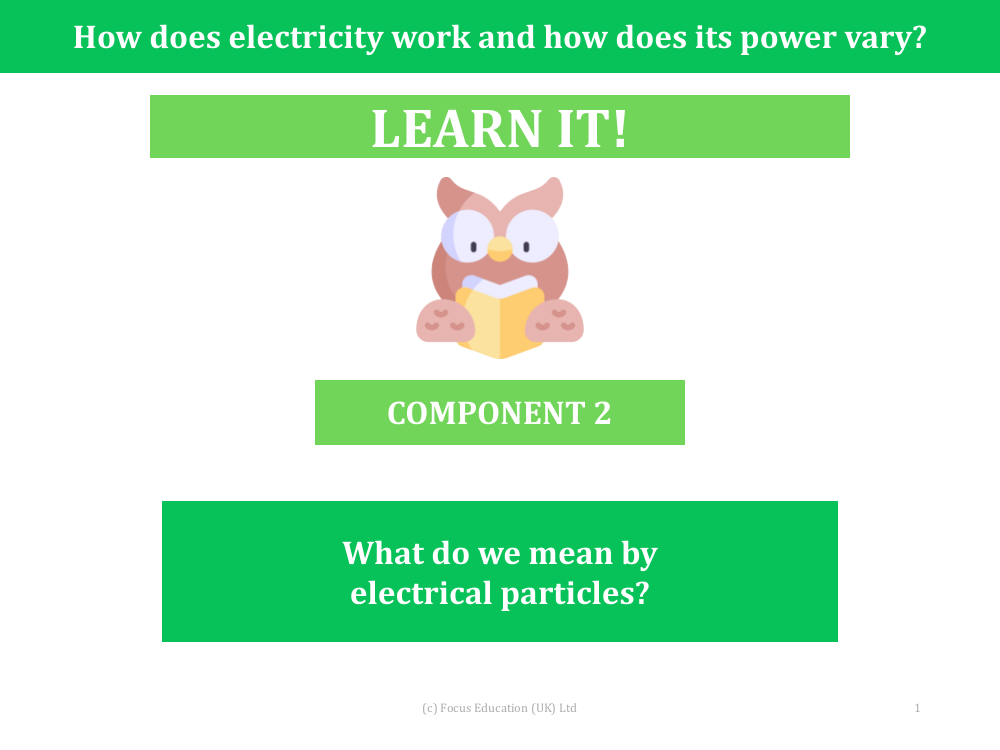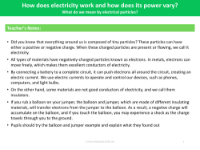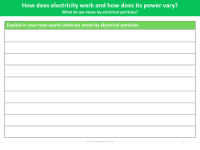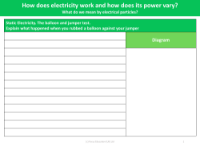What do we mean by electrical particles? - Presentation

Science Resource Description
Electrical particles refer to the minuscule charged particles that make up everything in our environment. These particles can possess a positive or negative charge, and when they are in motion or accumulate, this phenomenon is known as electricity. The most common type of charged particle involved in electricity is the electron, which carries a negative charge. Materials such as metals allow electrons to move freely through them, making them excellent conductors of electricity. This property is exploited in creating electric currents by connecting a battery to a circuit, which pushes electrons through the circuit, allowing us to power various devices like phones and light bulbs.
Conversely, some materials do not allow electrons to flow freely and are known as insulators. An example of this concept can be demonstrated with a simple experiment involving a balloon and a jumper. When the balloon is rubbed against the jumper, electrons are transferred from the jumper to the balloon, giving the balloon a negative charge. This build-up of static electricity can result in a small shock if the charged balloon is then touched, as the electrons find a path to the ground through the person touching it. This experiment is a practical way to observe the principles of static electricity and understand how electrical particles behave differently in conductors and insulators.



